Day 27 of Commoners’ Advent is for St Lucy's Day; as we begin, imperceptibly at first, to turn towards the light we must first honour the ‘midnight of the year’.
December 13th is St Lucy's/Lucia’s Day, or Lussi-mas, a weaving of both pre-Christian and Christian origins. This is a particularly popular celebration in Italy and especially Scandinavia, where candles are lit to call back the light in this time of deepest dark. It also honours 3rd Century St Lucia or Lucy as 'Saint of Light' and bearer of hope through these long nights. She is the patron saint of those who are blind, together with authors, cutlers, glaziers, laborers, martyrs, peasants, saddlers, salesmen, stained glass workers, and is invoked against haemorrhages, dysentery, diseases of the eye, and throat infections. It's said that to celebrate her on her Feast Day means that we will find enough light to see us through the long winter dark still to come.
There are many female saints who are said to have 'plucked out their eyes' to avoid marriage because they had already consecrated themselves to God. Having frightened off their persistent suitors, their sight is restored. Like Brigid in our own lands, with whom she shares much symbolism around light, St Lucy is one of these. In other tales, Lucy is tortured by having her eyes gouged out prior to her execution for distributing riches to the poor & for refusing to burn offerings to an image of the Roman Emperor. In both cases, her sight is returned to her. For this reason, she is often depicted with two sets of eyes.
On St Lucy's Day 2021, I was struck by The Root Circle's reflection on Francesco del Cossa's 15th C painting of St Lucy, showing her holding her second set of eyes in the leaves of a plant; that "these eyes growing out of a stem lead me to believe nothing more than that Santa Lucia was a visionary plant witch. And plants not only restored her vision but gave her an extra set of eyes." It feels that we might then interpret these, on the surface deeply disturbing, tales as allegories in which those who are blinded regain not only their sight but 'second sight', a deeper way of seeing, something that is so needed in our world of often shallow meanings.
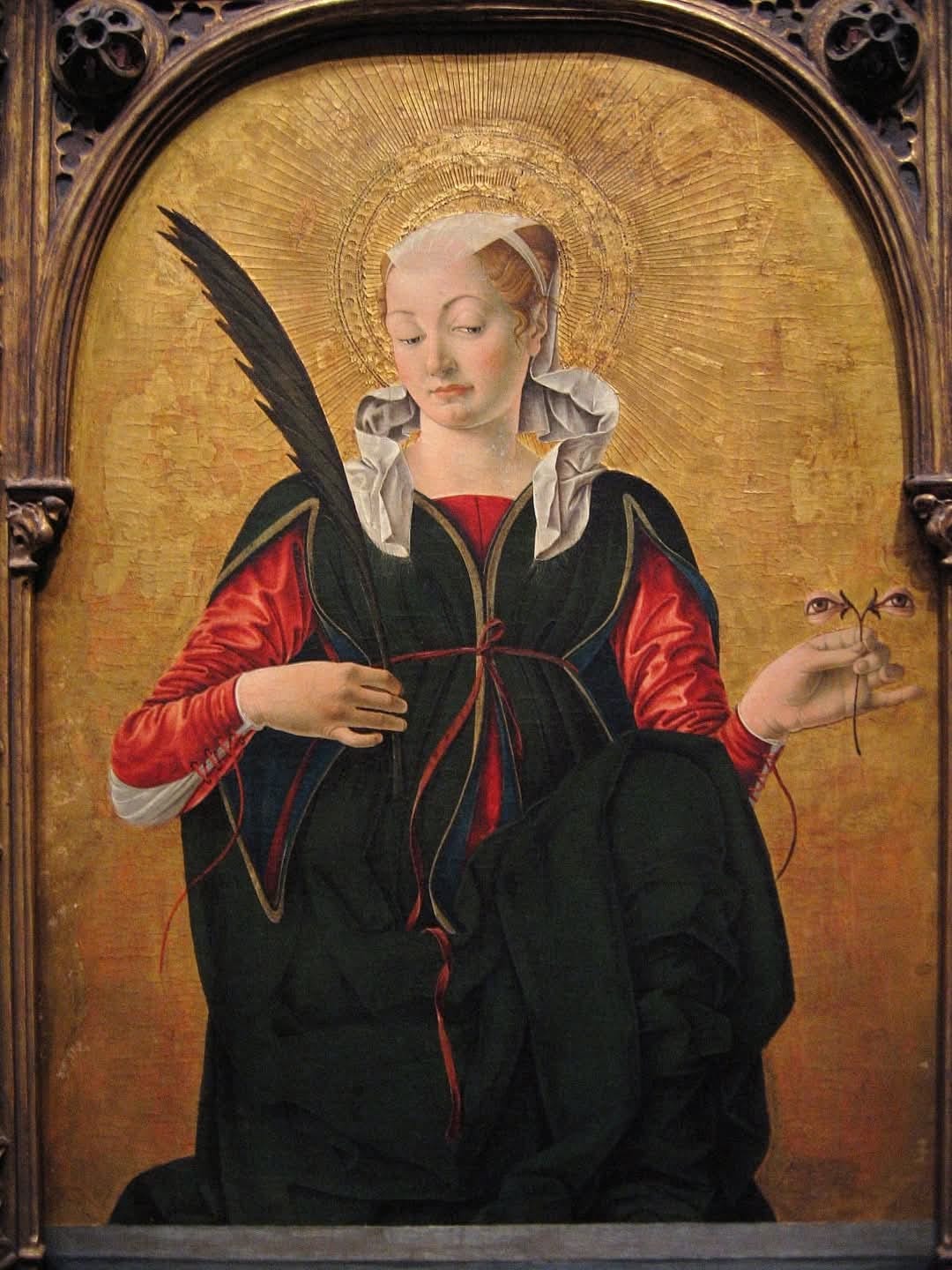
Returning to the theme of light, Lucia is said to have taken food & aid to 3rd Century Christians who were in hiding from Roman persecution in the catacombs below her city (Syracuse, on the island of Sicily). To enable her to carry as much food as possible by having both hands free she lit her way with a headdress of candles. This story is re-enacted all over the world on this day each year, but particularly in the Northern lands.
Following a still older tide, she is also Lussi ('light'), Mother of Spirits known in some lands as the 'Yule Riders'. On St Lucy's Eve, Lussi would visit each house to make sure that it was ready for Yule, particularly in regard to spinning and baking. If she found the work unsatisfactory, she might press her terrifying face against the window, or even fly down the chimney crying, "Not brewed, not baked, no great fire do they have!” To avoid her wrath, people would stay indoors eating and celebrating to placate her (an onerous task indeed!). It was also important to clean the barn and provide clean straw and good food for the animals who were able to talk to one another on Lussi's Night, sharing reports of how they had been treated throughout the year and calling dark winter spirits to anyone who had ill-treated them.
A traditional food on St Lucy's Day are spiced saffron buns, known as Lussekatter; golden, serpentine, and symbolising the sun, they would have been eaten by rich and poor alike on this day in remembrance of Lussi/Lucy. There is a recipe to make our own here.
In her home of Sicily, a silver statue of her is paraded through the streets of Syracuse in memory of a legend that a great famine ended on this date when ships loaded with grain entered the harbour.
This is why a dish of boiled wheat berries often mixed with ricotta and honey, called cuccia, or sometimes served as a savoury soup with beans, is eaten for her Feast Day. There is a recipe here. Interestingly, traditional food for St Lucy’s Day is similar to that eaten on St Barbara’s Day in Eastern Europe. They also share the tradition of planting wheat seeds on their Feast Days to be placed on a Nativity scene for Christmas Day.
Lucia is said to bring gifts to good children and coal to bad ones on the night of 12th/13th December, echoing St Nicholas elsewhere. According to tradition, she arrives in the company of a donkey and her escort, Castaldo. Children leave out coffee for Lucia, a carrot and hay for her donkey, and a glass of wine for Castaldo.
Before changes to the calendar St Lucy's Day would have coincided with the Winter Solstice (the discrepancy when the calendar changed was 8 days). In many Northern lands, St Lucy's Eve is seen as the deepest darkness, the 'midnight of the year', and so traditionally processions are held in which young girls wear headdresses of candles & carry Lussekatter buns as symbols of the light returning. Beautifully, Old St Lucy’s Eve now falls on Christmas Day and her old Feast Day on St Stephen’s Day.
Here is yet another Winter Festival of Light, just like Diwali, Hanukkah, Winter Solstice, and Christmas too. To celebrate the light in the dark is an act of beautiful defiance.
Defiance I believe is one of our most glorious human traits, especially when used wildly and well. St Lucy's Day is a reminder that innocence, beauty, and seemingly small acts of generosity are defiant too; an alternative to the often prevailing view that winter is only to be endured.
And writing of defiance, today is also the day when, on 13th December 1982, up to 30,000 women joined hands around Greenham Common US Airforce base in protest at nuclear weapons being held there.
I am quite sure that, hand to hand, and soul to soul, that act of hope and defiance is still shimmering through the web that connects all things. There are so many ways in which the Light can return.
On St Lucy's Day 2021, I took my Midwinter candle to our nearby hedgerow to call in the light and, in my own tiny act of defiance, I resolved to look at last at what had become of my 'tiny tundra'; a scrap of 'wasteground' at the side of the local field, possibly the remains of a long gone building but which had become its own little ecosystem of small trees, a tangle of honeysuckle, drifts of rosebay willowherb in the summer, & a dense carpet of reindeer lichen & stonecrop. I have never found reindeer lichen anywhere else and loved it so. It is slow growing (only 3-11mm per year) and can take decades to recover if trampled, burned, or overgrazed. This community was at least 30ft square. We can only imagine how long it had been growing there untouched. A precious landscape, a reminder of the reindeer once followed by our far-off ancestors through this land.
But I was deeply saddened to find that the tiny tundra and its reindeer lichen was no more, stripped bare for building work that had prevented our community from accessing the field for many months. I have no doubt that those who cleared the land believed there to be nothing there. And so it mattered on St Lucy's Day to witness, to see what had been previously unseeable through brokenheartedness, to look loss in the face, & to mark that land as sacred with St Lucy's defiant song. Because, if we can't sing for the light in moments of deepest dark then Advent is not truly doing her work in us. We are an Advent people. We sing before the dawn.
Lucia, Lucy, Saint of Light,
standing bright at the midnight of the year,
help us to keep alight the flame of hope
even in the deepest dark.
Help us to wear our defiance as a crown
that sheds light on the places where injustice
hides but does not burn others,
or ourselves.
Amen.
A NOCTURNAL UPON ST. LUCY'S DAY,
BEING THE SHORTEST DAY.
by John Donne
*
'TIS the year's midnight, and it is the day's,
Lucy's, who scarce seven hours herself unmasks ;
The sun is spent, and now his flasks
Send forth light squibs, no constant rays ;
The world's whole sap is sunk ;
The general balm th' hydroptic earth hath drunk,
Whither, as to the bed's-feet, life is shrunk,
Dead and interr'd ; yet all these seem to laugh,
Compared with me, who am their epitaph.
*
Study me then, you who shall lovers be
At the next world, that is, at the next spring ;
For I am every dead thing,
In whom Love wrought new alchemy.
For his art did express
A quintessence even from nothingness,
From dull privations, and lean emptiness ;
He ruin'd me, and I am re-begot
Of absence, darkness, death—things which are not.
*
All others, from all things, draw all that's good,
Life, soul, form, spirit, whence they being have ;
I, by Love's limbec, am the grave
Of all, that's nothing. Oft a flood
Have we two wept, and so
Drown'd the whole world, us two ; oft did we grow,
To be two chaoses, when we did show
Care to aught else ; and often absences
Withdrew our souls, and made us carcasses.
*
But I am by her death—which word wrongs her—
Of the first nothing the elixir grown ;
Were I a man, that I were one
I needs must know ; I should prefer,
If I were any beast,
Some ends, some means ; yea plants, yea stones detest,
And love ; all, all some properties invest.
If I an ordinary nothing were,
As shadow, a light, and body must be here.
*
But I am none ; nor will my sun renew.
You lovers, for whose sake the lesser sun
At this time to the Goat is run
To fetch new lust, and give it you,
Enjoy your summer all,
Since she enjoys her long night's festival.
Let me prepare towards her, and let me call
This hour her vigil, and her eve, since this
Both the year's and the day's deep midnight is.
*
(Thank you to Susa for introducing me to the St Lucia icon)
#CommonersAdvent #OldAdvent #CelticAdvent #StMartinsLent #WinterLent #StLuciasDay
I am determined to continue offering my work free of charge, because that too is resistance, but if you would ever like to support me with pennies you can do that at https://ko-fi.com/radicalhoneybee. Thank you so much, both for pennies and for all other forms of support, all of which are worth more than their weight in gold.
References:
St Lucy’s Day as the Shortest Day
Lussi’s Night and here.



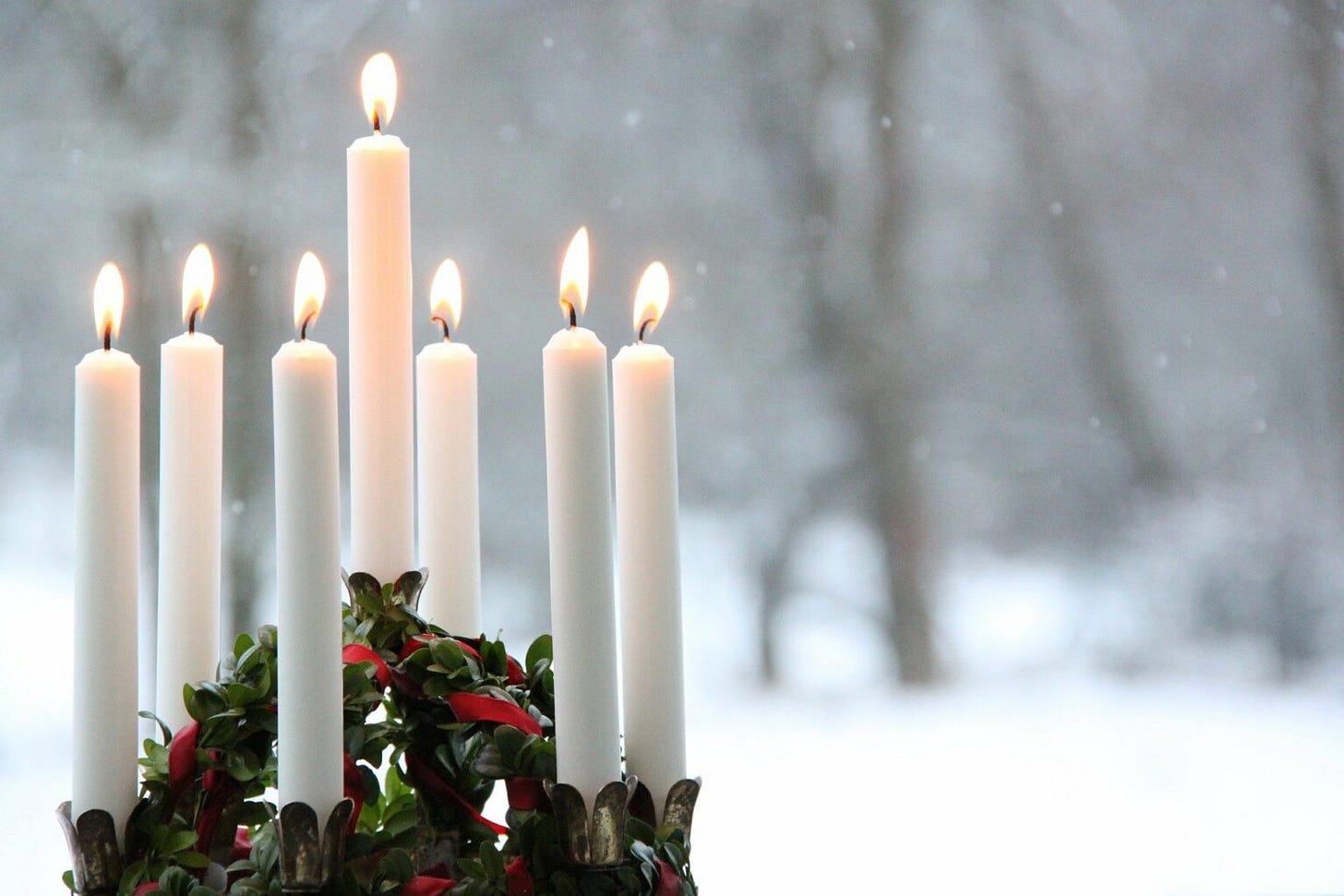
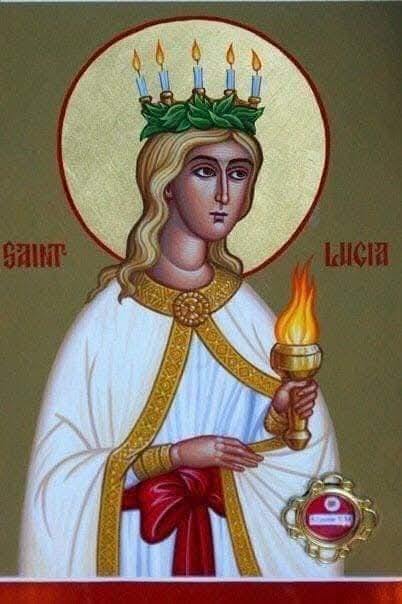

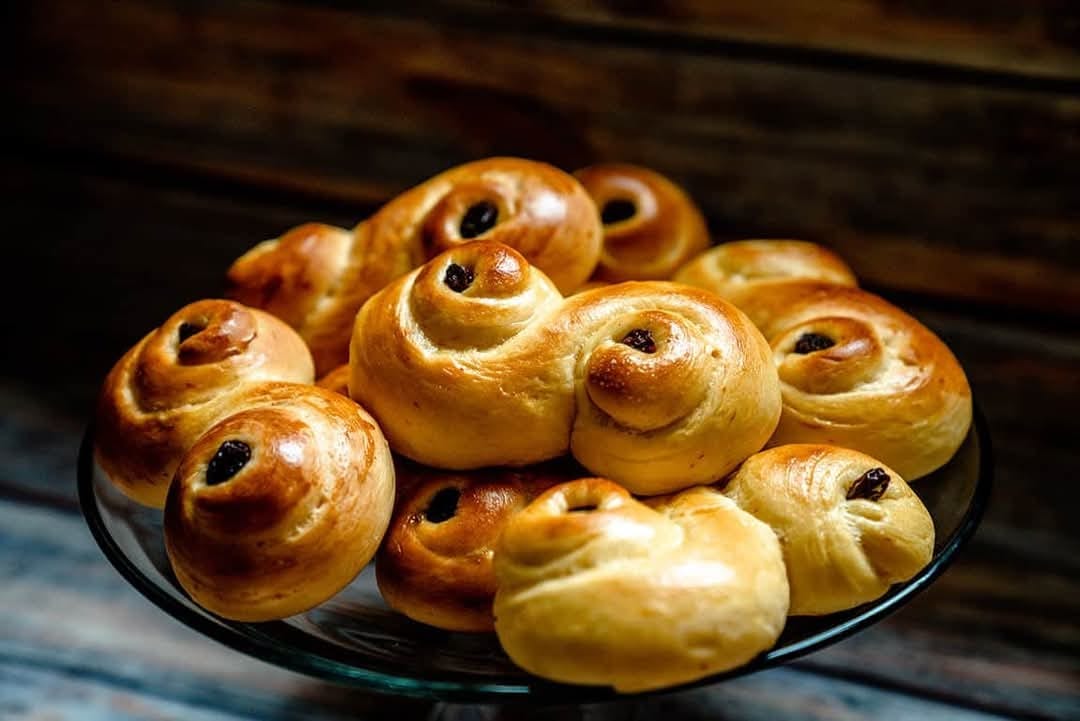




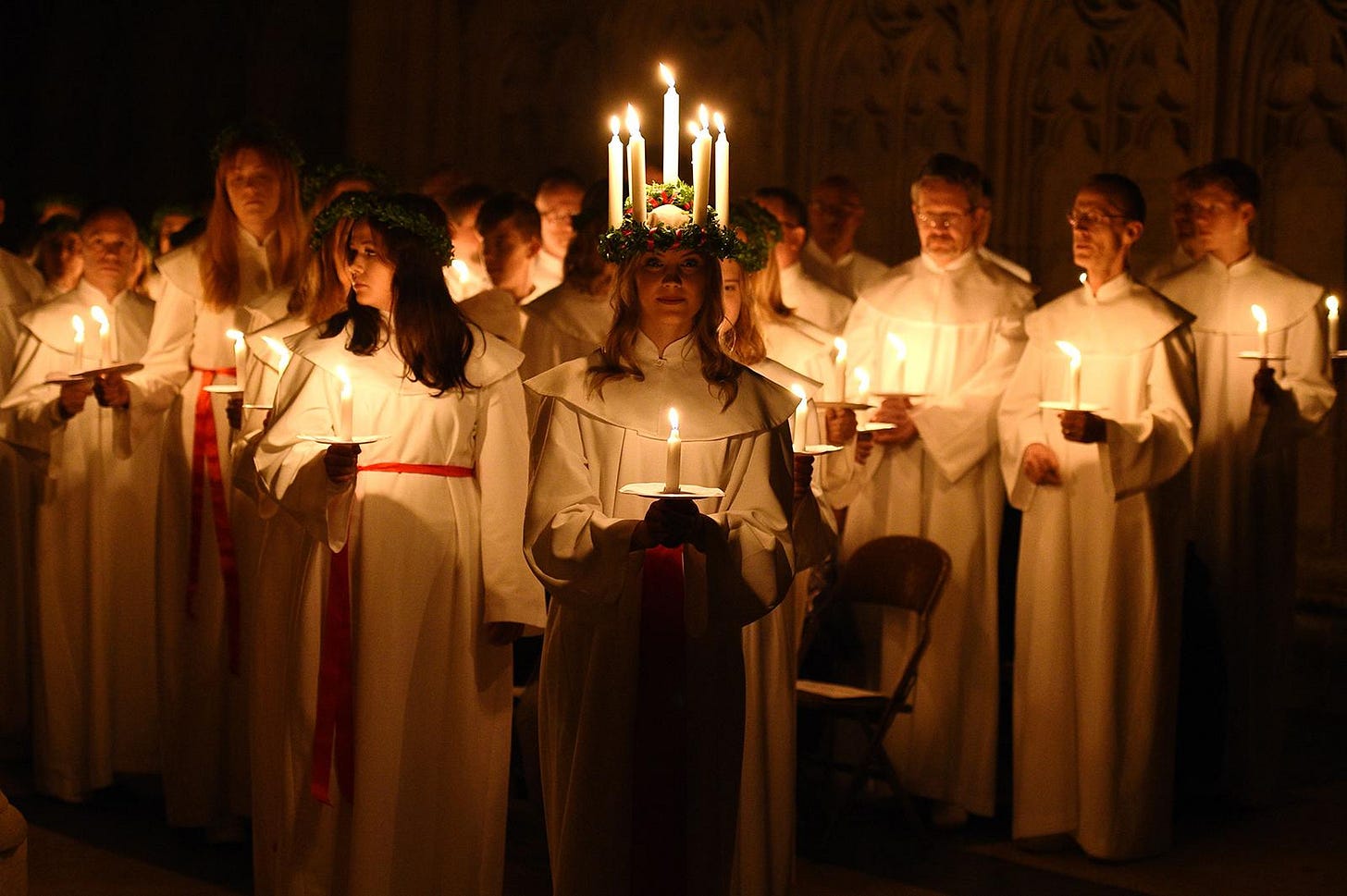




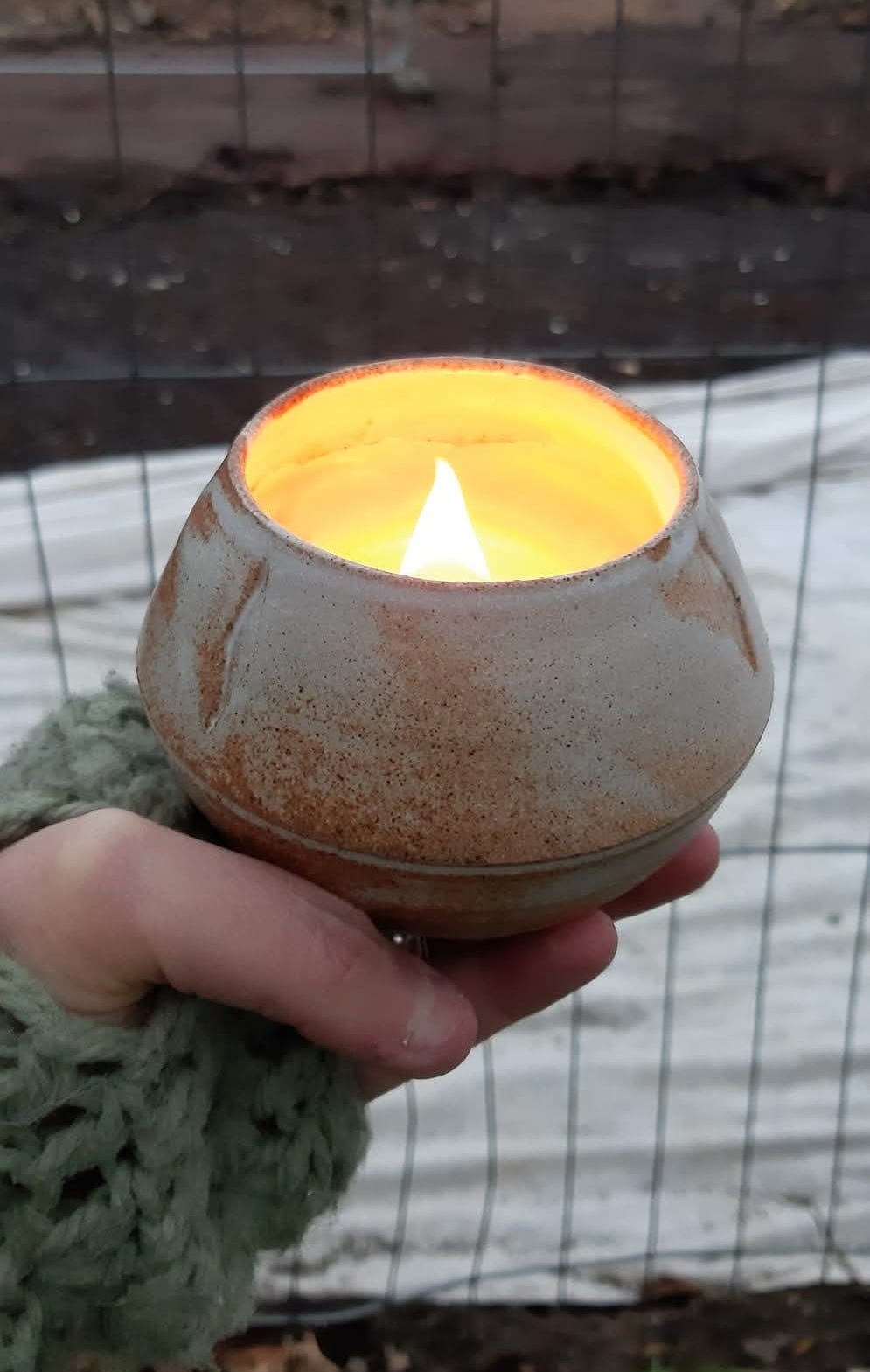
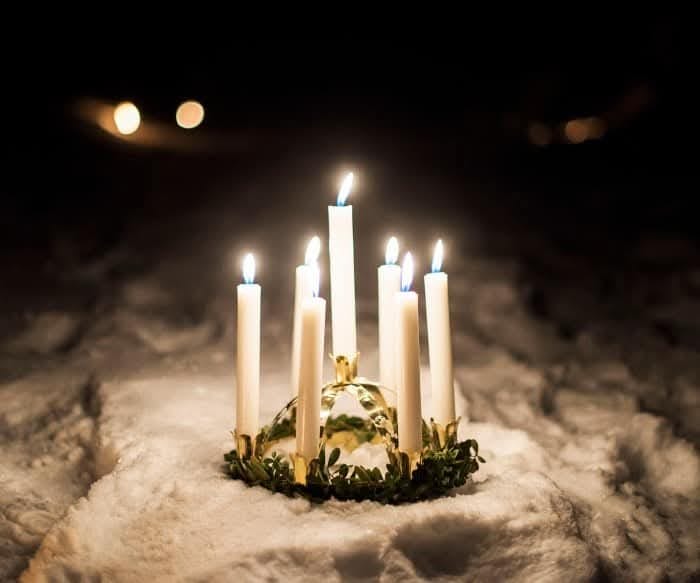
Hello dear friend. Your link to the recipe brought me back to your post, but I did find a recipe here. Our church is going to have a special hospitality hour next weekend and I intend to bake some of these. I'm sure they will be lumpy and funny as I am no baker, but I will share some of this Lucy-lore.https://www.simplyrecipes.com/recipes/st_lucia_saffron_buns/
Glad Lucia✨ (belatedly). Wonderful stories, I love this time of year, I feel so much closer to the earth and myself and to the mystery of it all.